If morel mushrooms are the king of spring foraging, then Ramps are the prince. Ramps, ramsons, wild onions, wild garlic, regardless of their name, you are truly blessed if you find a patch in early spring.
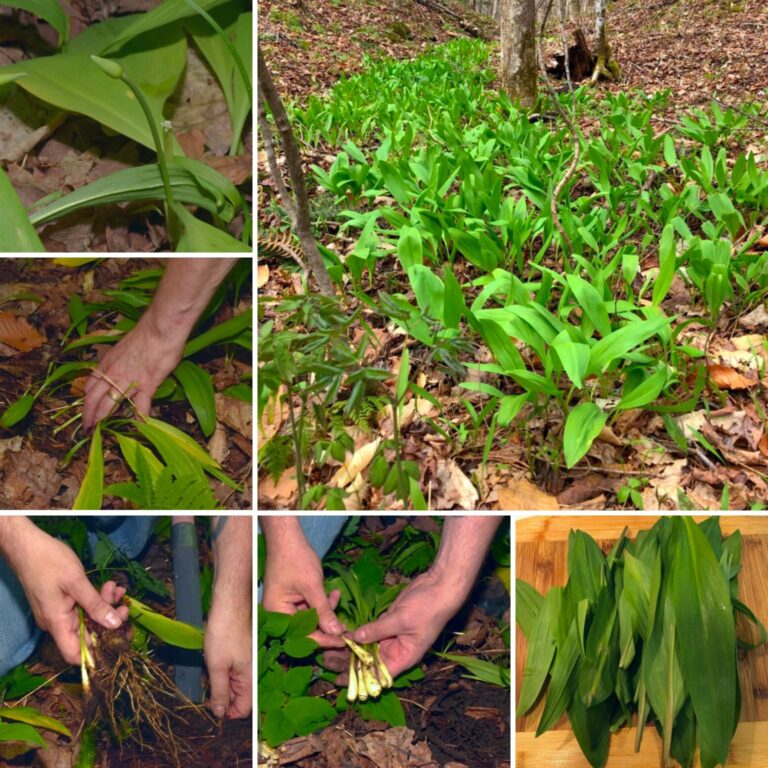
With easy identification, a unique flavor, and numerous uses, the gift of ramps in the spring is something I look forward to as the first patches of ground appear beneath the snow.
Mother nature has gifted us with several colonies near our off-grid camp. Each spring we wait for the first shoots to push up through last fall’s leaves.
For five years now, we have undertaken this gentle harvest. We then grill, sauté, and puree the ramps and bulbs. Paired with fresh caught trout, we truly live like royalty.
Let’s look at the best practices for harvesting your own wild ramps.
What Are Ramps?
In short, ramps are a wild cross between onions and garlic. Each ramp (Allium tricoccum) plant has several broad bright green leaves and a single bulb.
There are two varieties Allium tricoccum var. tricoccum has a broader leaf that meets the bulb via a slightly pink or red stem. The variety Allium tricoccum var. burdickii has a narrow leaf and a pure white stem. Burdickii also has a milder flavor and smell.
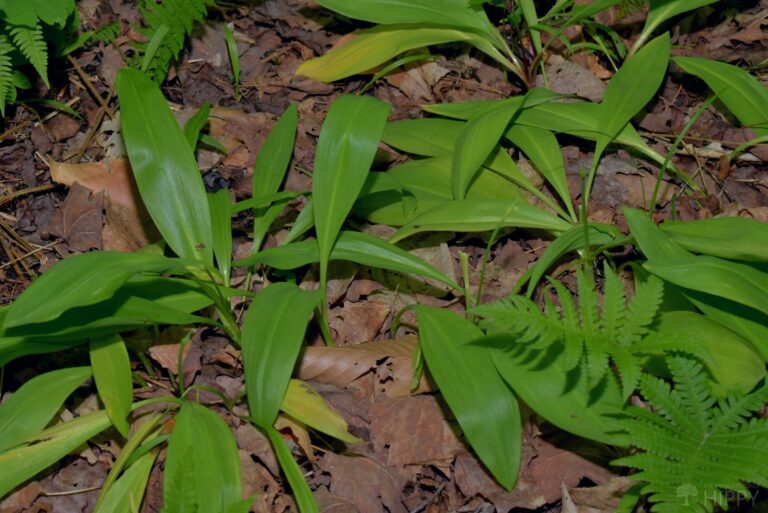
The most identifiable feature of ramps is their smell. I hate to be a broken record, but the smell of ramps is a close comparison to a combination of onion and garlic. It’s pungent and strong.
Mowing the grass around our camp in the spring usually brings a tear to our eye as we mow over a dozen or so plants that have ventured from the forest onto the lawn.
Historically, ramps have been sought out as one of the first edible greens of the year. After a long winter, both indigenous people and early settlers would seek them out as a refreshing tonic.
Identification, Location, and Timing
Ramps are easily identified if by nothing else, then the fact that they are one of the first greens of spring. Found in dense woods, both their early shoots and leaves are a beacon in the forest.
Ramp Identification
First, ramps have an oval or conical shaped leave that appears with 1-4 leaves per plant. Further, they grow in clusters of 2-6 bulbs.
Mature patches can have hundreds of plants covering many square yards. Therefore, look for clusters dominated by similar plants.
Closer review of the leaves will reveal a slightly red or pink base to each leaf. In the case of burdickii, the stem remains white as it recedes into the ground to the bulb.
Later in the season, each cluster of leaves will have a single stem that terminates in a flower. These scapes are a similar green as the leaves. The flowers are starburst of many white flowers topping the single stalk.
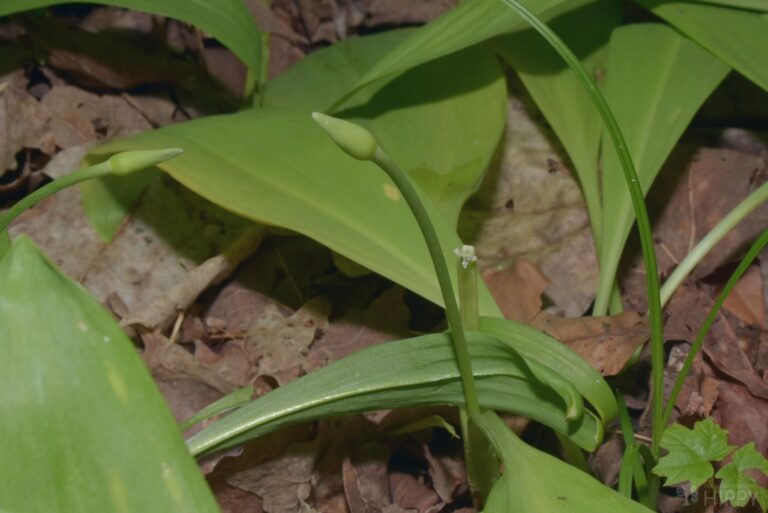
Poisonous Look Alikes For Ramps
As stated, the keys to identification are the leaf length (about 6 inches), shape (long and broad), and smell.
There are two poisonous look-alikes to be wary of. These are lily of the valley and false hellebores. Both are readily differentiated easily with close inspection.
The lily of the valley is primarily differentiated as it has rhizomes and completely lacks a bulb. Later in the season, each plant forms a stem with multiple bell-shaped flowers.
Finally, and most easily identifiable, it does not have the onion and garlic smell when you tear or crush the leaves.
The false hellebores have multiple leaves emanating from a single stalk. When fully mature, they also achieve heights up to 5 feet.
Likewise, false hellebores also have long clusters of flowers in contrast to the single starburst of flowers for ramps. Finally, false hellebores do not have the distinct smell of ramps.
Location And Season For Finding Ramps
As stated, ramps are one of the first to appear in the forest. To find them, look in mature, deciduous woods. They love deep leaf litter, dappled shade, and moist, but not wet conditions.
You can usually find them in small depressions, and at the bottom of gentle slopes. They occasionally migrate out into transitionary areas (border between woods and meadows) but this is not often.
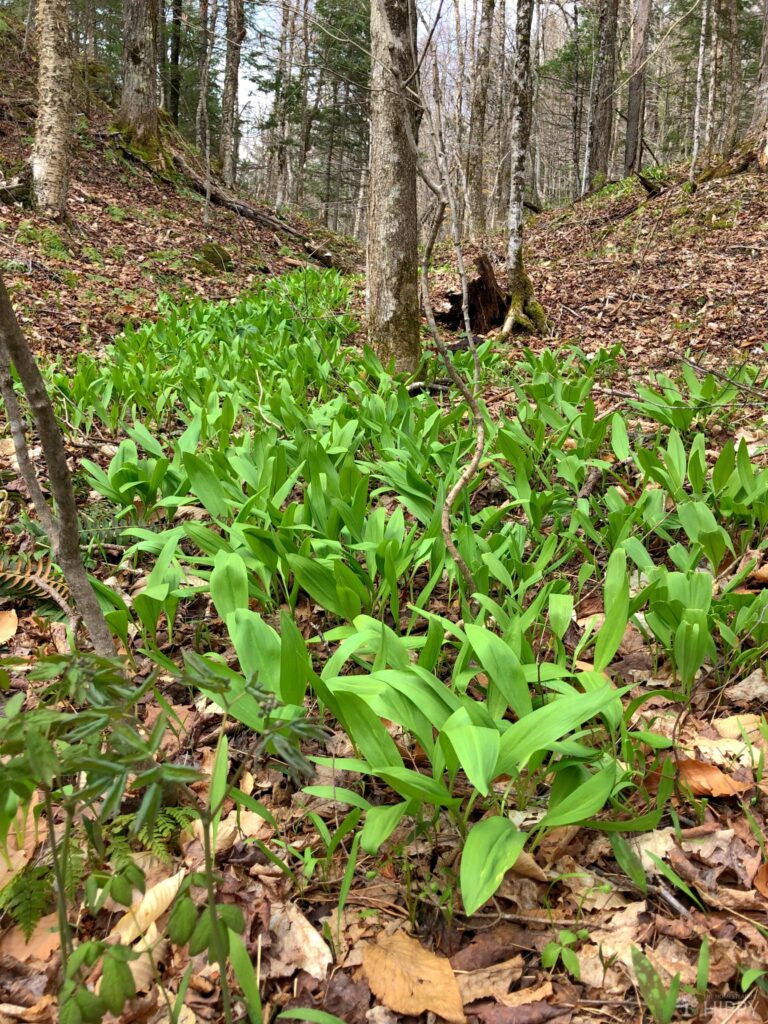
If you see one or two, start looking around. I find that once my eyes have become accustomed to spotting their leaves, finding them becomes much easier.
That first plant is always a challenge. Even in areas that I know they grow, it may take a minute or two to find the first.
Start searching along streams and small creeks. Your scouting should include both inlets and outlets to ponds and lakes. Focus on these damp areas, even look for trout lilies as the two plants enjoy the same environment.
Ramps are a spring plant and push through the leaf litter as soon as the snow has melted. Depending on your location, that can be March or April. They rarely last more than a few weeks.
Which for my area of the Northeast United States, means that the season starts in April and is over by June 1. In short, they appear quickly, then disappear even quicker.
With such a short season, check your spots early and often. I’ve been skunked a few times by making the poor decision to check “next weekend.”
What Do Ramps Taste Like?
Ramps have been accurately compared to a combination of onions and garlic. I whole heartedly agree with this assessment. Particularly for the leaves.
Add in a slight vegetation taste in there (e.g., grass or lettuce) and you have an idea of the flavor profile.
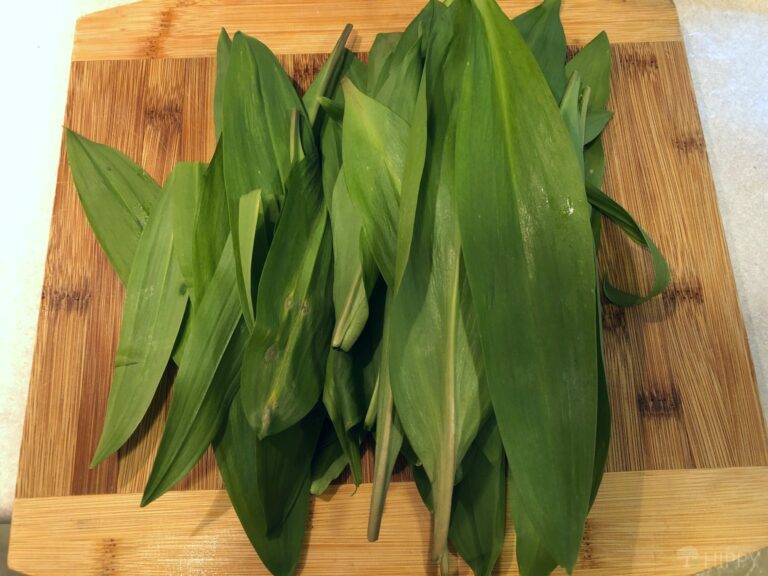
As you would expect, the flavor changes with the cooking treatment. The first batch of the season in our house gets blanched in boiling water for 30 seconds, then chopped and blended with olive oil and a splash of lemon juice.
The blanching tames the flavor slightly and brightens the color to a neon green.
This puree is great for grilled meat, especially pork. You can also blend it with cold butter to make a garlic/onion/herb butter that can make a week-old sock taste good.
You can further alter the flavor profile by grilling the raw leaves until toasted, then drying and powdering them. Adding smoke to that onion/garlic mix is just short of heaven.
The bulbs intensify the flavor, however, sautéing, steaming, or pickling tame the intensity as well as bring out a bit of sweetness when done right.
Healthy Harvesting
First and foremost, know the applicable laws in your area. In some states, harvesting is specifically regulated regarding location and harvested amount. Don’t run a fowl of the law just for a dinner snack.
If you have gone to the effort to scout out a ramp patch, then it is your responsibility to treat this plant with the respect it deserves.
A single bulb takes 3-10 years to reach maturity. Incorrectly harvesting the leaves can be destructive, as is every bulb you pick.
Let’s start with the leaves. I prefer them and most of my harvest is only from the leaves. It’s best to pick less than half of the leaves per bulb.
Take a quick assessment of the leaves in a cluster and gently snip off one or two leaves. Always leave more than you take. This ensures the plant has the means necessary to continue to grow another year.
It’s also recommended that you snip the leaves and don’t pull them. By pulling out a leaf, you risk damaging or at least weakening the bulb.
Again, the bulb has been there a long time. No need to shorten its lifespan needlessly.
Never harvest from every plan in an area. This is too much stress on the colony and you risk weakening the plans and the colony.
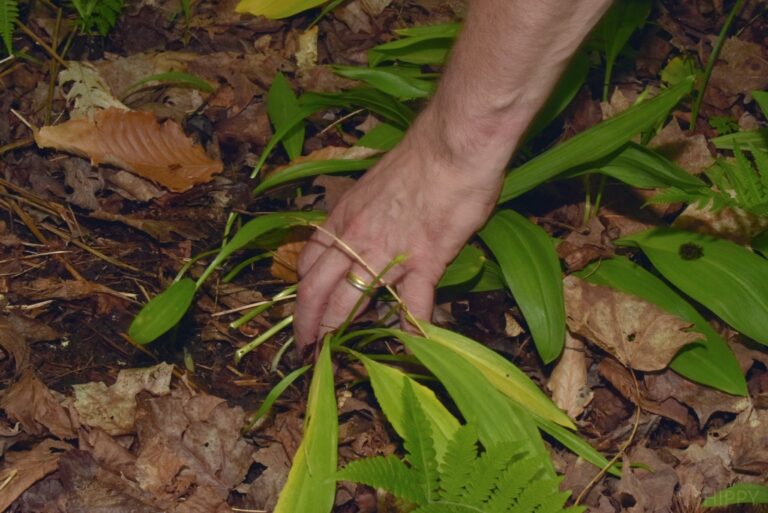
When harvesting bulbs, realize that this is a destructive harvest. You are taking the entire plant and it will not grow back. Considering the number of bulbs to harvest, there is no set science on this. Therefore, I go by the 20 percent rule.
I never harvest over 20% of the plants in a cluster and I keep the clusters spread out as possible. Again, I rarely harvest bulbs as I get enough enjoyment from the leaves.
When possible, snip off the roots to the bulb and place them back in the ground. Ramps can grow from roots. This allows you to replace what you reap!
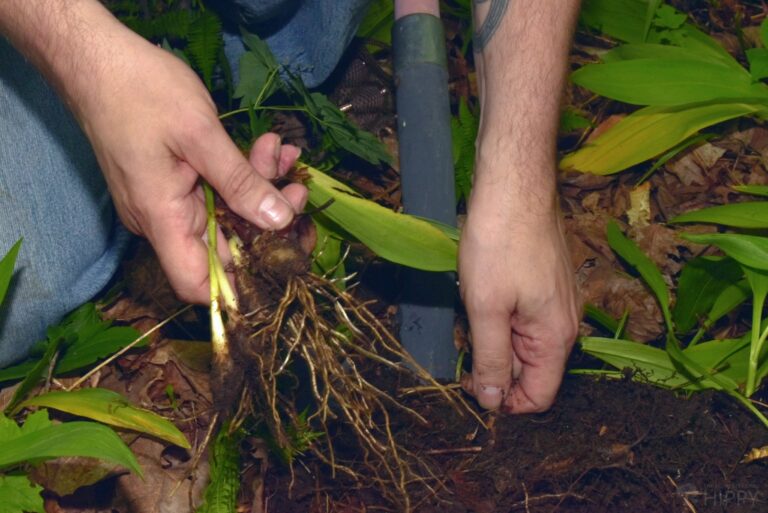
Finally, as you disturb the soil and leaf litter, come back a few weeks later when the ramps have gone to seed and spread a few seeds where you have harvested.
This gives the seeds the best opportunity to sprout, take root, and provide you another harvest in a few years.
Ramps Recipes
From grilled delights to pickled perfection, these dishes showcase the unique flavors of ramps in all their glory:
Wrapping Up Ramps
Ramps are one of the greatest joys of spring. After a winter foraging little more than Chaga, it’s nice to get greens once again.
I’m truly out of the winter blues when I have ramps, fiddleheads, and a trout in the pan. This holds me until next spring.
Be respectful of your harvest. Only take what you need, can process, and store without waste.
Further, help to nurture your patch by revisiting when they go to seed, and rough up the leaf litter, giving the next generation a little boost!
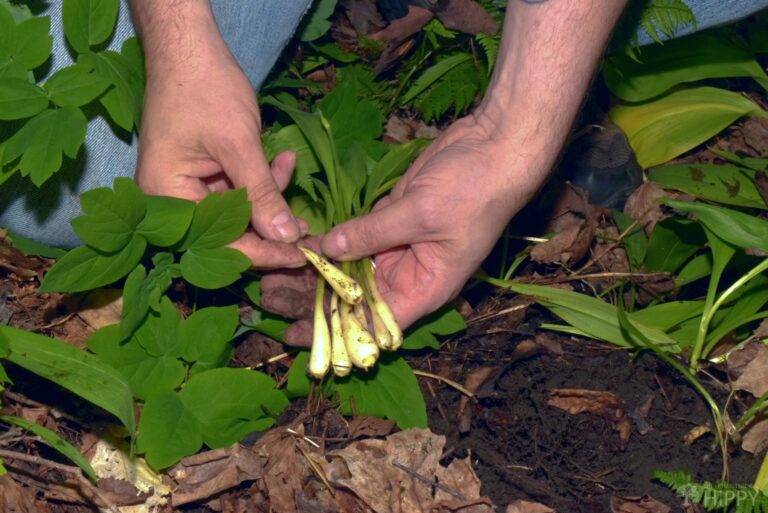
Most of all, get out there, learn about this plant, and enjoy your relationship with Ramps. It is one that can last a lifetime!

M. I. Grey is a homesteader and prepper living off-grid. He’s been trained in a variety of self-reliance skills such as orienteering, foraging, and many more. Check out the rest of the THH team.
